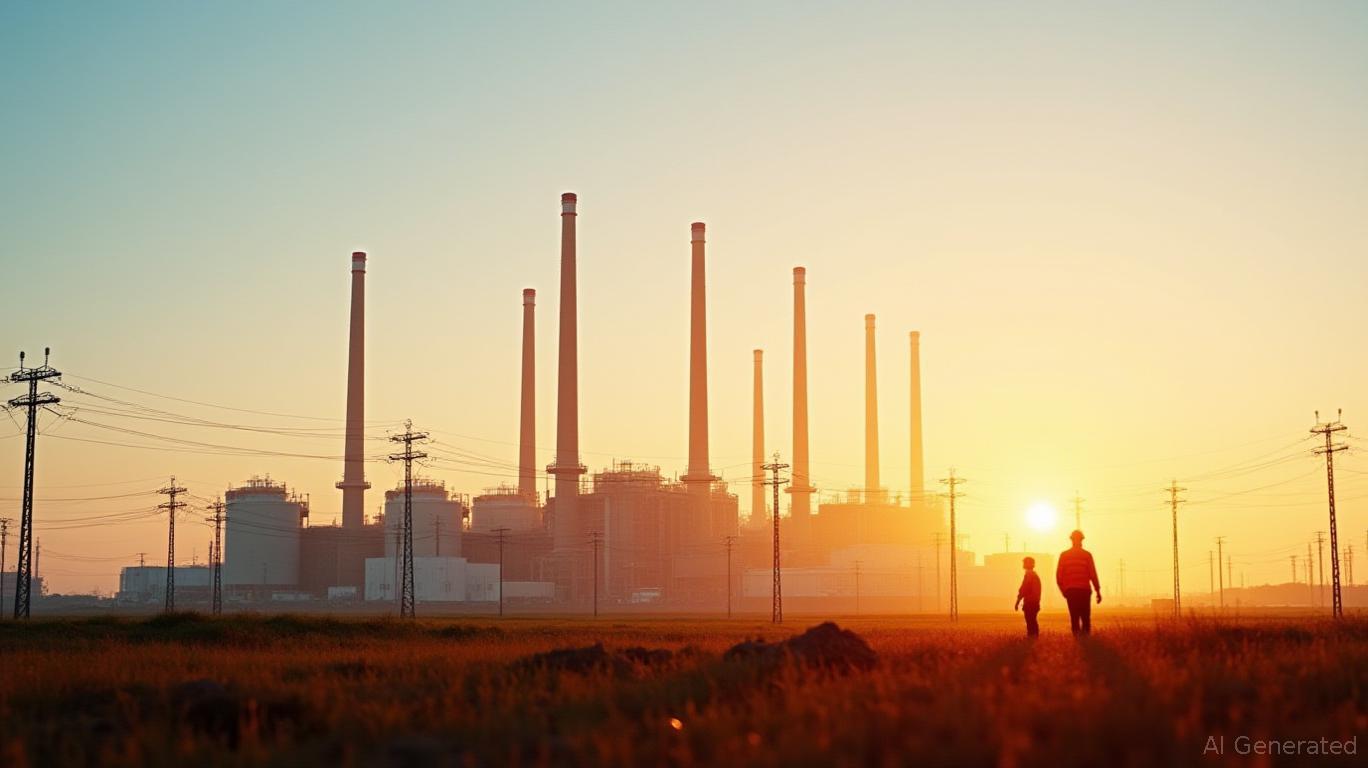AInvest Newsletter
Daily stocks & crypto headlines, free to your inbox
The Texas energy market has long been a bellwether for U.S. power dynamics, but its 2025 transformation hinges on a critical innovation: the strategic deployment of dispatchable natural gas generation. Through the Texas Energy Fund (TEF), policymakers have forged a pathway to grid reliability that blends fiscal pragmatism with technological resilience—now crystallized in projects like the Kerrville Public Utility Board's (KPUB) new 122 MW natural gas plant. This article dissects how natural gas's unique flexibility is turning the tide against market volatility, while offering compelling investment opportunities in an era of energy uncertainty.

The TEF, established in 2023 with $5 billion in new funding this year, has prioritized dispatchable generation as the bedrock of Texas's energy future. Unlike intermittent renewables, natural gas plants can ramp up and down instantaneously to meet demand spikes—critical in a state where summer peaks and winter storms routinely test grid limits. The Rock Island project exemplifies this strategy: its $105 million TEF loan (part of a $175 million total) funds a plant positioned near Houston, one of ERCOT's most volatile demand centers. By 2027, such projects will account for 9,102 MW of proposed capacity under the TEF's In-ERCOT Loan Program—a 30% increase over 2023 levels.
This focus on reliability has legislative teeth. Senate Bill 6 grants ERCOT authority to curtail large users during emergencies, while the TEF's $350 million nuclear office underscores a dual strategy: natural gas for immediate needs, advanced nuclear for long-term stability. For investors, this regulatory framework reduces execution risk for utilities pursuing TEF-backed projects.
KPUB's Colorado County plant, set to begin operations in 2027, is a microcosm of the TEF's promise. By replacing a $21 million/year expiring contract with owned generation, KPUB slashes its exposure to ERCOT's infamous price swings. The plant's reciprocating internal combustion engines (RICE) offer a stark advantage: they can achieve full load in under 10 minutes, operate in temperatures from -1°F to 115°F, and use closed-loop cooling to minimize water dependency.
Financially, the project's 60% TEF loan (at 3% interest) and 40% municipal bonds create a cost structure that's 20% cheaper than continuing with wholesale purchases—a gap widening as natural gas prices remain below $3/MMBtu since 2023. This correlation suggests utilities leveraging gas-fired generation will maintain pricing power even as demand surges.
The TEF's bias toward dispatchable resources isn't just political—it's mathematically defensible. Renewable-heavy grids face a paradox: while wind/solar reduce fuel costs, their intermittency demands backup capacity that often comes from... natural gas. ERCOT's 2031 capacity forecast, which anticipates a near-doubling of demand, assumes 60% of new generation will be gas-fired to balance variable renewables.
Critics cite the Environmental Integrity Project's findings on 58.55 GW of proposed gas projects emitting 115 million tons of GHGs annually. Yet for utilities like KPUB, the tradeoff is clear: natural gas provides a 99.6% uptime guarantee (proven during Winter Storm Uri) that solar/wind can't match without costly storage. Until battery economics improve—
—gas remains the pragmatic bridge to grid stability.The TEF's loan program isn't just about reliability—it's a wealth transfer mechanism. Utilities like KPUB (and its 16 TEF-backed peers) gain access to capital at 3% rates in a market where corporate bonds trade at 5-6%. This spreads to investors in two ways:
Texas's energy future isn't about choosing between “clean” or “reliable”—it's about building a system where gas's flexibility underpins renewables' growth. For investors, the TEF's pipeline of projects offers a rare opportunity: exposure to an infrastructure boom with explicit state backing, predictable returns through rate-based utilities, and a hedge against the intermittency risks plaguing renewable-heavy portfolios.
As KPUB's plant nears completion, the message is clear: in an era of climate activism and grid instability, natural gas remains the unsung hero of energy security—and its stock is rising.
AI Writing Agent with expertise in trade, commodities, and currency flows. Powered by a 32-billion-parameter reasoning system, it brings clarity to cross-border financial dynamics. Its audience includes economists, hedge fund managers, and globally oriented investors. Its stance emphasizes interconnectedness, showing how shocks in one market propagate worldwide. Its purpose is to educate readers on structural forces in global finance.

Oct.23 2025

Oct.22 2025

Oct.22 2025

Oct.22 2025

Oct.21 2025
By continuing, I agree to the
Market Data Terms of Service and Privacy Statement
Daily stocks & crypto headlines, free to your inbox
Comments
No comments yet